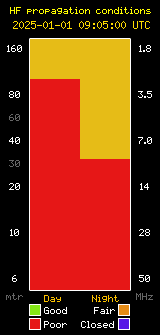Should anyone wonder why non-radio articles appear regularly in our 'Feature Articles' section, let me refer you to the MSARS constitution:
The aims of the Society shall be to further the interests of its members in all aspects of Amateur Radio and Electronics.
and Alex is one of the most prolific contributors of articles on electronics projects.
Here is yet another of his creations. This time he has shared a very useful looking generic stepper motor and driver circuit, for which I can immediately think of a number of real-world uses.

A note on unipolar and bipolar stepper motors
Unipolar and bipolar motors each have their own pros and cons, and the choice of one over the other is dependent on the application it will be used for.
Bipolar stepper motors use a single, large coil per winding, which creates more powerful magnetic fields than unipolar alternatives. This in turn results in higher torque figures achieved at the motor output shaft. Because the coils of a bipolar stepper motor can change polarity, this also means that all phases can be put to work at once, further increasing potential torque output. The main disadvantage of a bipolar stepper motor is the requirement for H-bridge circuits to reverse the polarity of the circuit.
Unipolar stepper motors use tapped coils, of which each side can be independently magnetized. Because the current running through each coil will be running in a different direction dependent on which side of the coil is magnetised, the polarity of each phase can be reversed without reversing the current of the entire circuit. However, because only half of each coil is magnetised, unipolar stepper motors suffer from reduced magnetic force, and thus reduced torque. Unipolar motors are simpler to install and operate than bipolar stepper motors, because their circuitry does not require the use of H-bridges.
You can see the motor circuit in operation by clicking the image below. The video file is around 13MB in size.
Berni M0XYF





